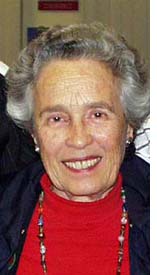
LA JOLLA, California — After Israeli cellist Amit Peled and his piano collaborator, Hyeyeon Park, entered the stage, the amiable cellist introduced his three-sonata program during the “Arts and Ideas” concert on March 14 at the Garfield Theatre. His concise and informative remarks about each work offered welcome focus for his listeners. His warm smile and engaging manner created an immediate bond with his audience.
The opening sonata by Beethoven (1770-1827), opus 102, #1 in C major, written in the last period of the master’s life, his hearing gone, reflected his mature Romantic style. Each of the movements began with slow material followed by fast allegros. Although much of the sonata reflects sadness and passion, there is still a glimmer of Beethoven’s humor in the final section as the cello holds a soft sustained double-stop, followed by the piano in a rapid four note gesture which the cello follows. It was as if the cello were trying to play catch-up. This happens twice before they finally play the four notes together. The last movement concludes with a rapid flourish.
The second sonata on the program was by Samuel Barber (1910-1981), a three movement work in C minor, written when Barber was 22 years old and still a student at the Curtis Institute of Music in Philadelphia. He was deeply in love with fellow student, the American opera composer, Gian Carlo Menotti, with whom he lived the rest of his life. The composition was begun when Barber was with Menotti in his family home in Italy, near the Tyrollean border. This is considered the first cello sonata written by an American composer and remains an important work in the cello repertoire. Barber, unlike many other early 20th century composers, did not delve into 12-tone serialism, but his music is considered neo-romantic, writing recognizable melodies and using classical structures. Peled and Park performed the work with great energy and musical depth.
After a five-minute intermission, Peled and Park returned for the final work on the program, the four-movement cello sonata in D minor by Demitri Schostakovitch (1906-1975). This was written before the composer’s
denunciation by Stalin, yet, Peled found a section near the end of the first movement where the staccato piano chords sounded like door knocks and the muted cello line reminded him of suppressed anguish and fear, a metaphor to what is felt today in Russia and in the war in Ukraine. As he explained, he sees music as a language of communication, similar to other languages, and he found, in this sonata, music to reflect the tragedy of today’s world.
Following a standing ovation for the virtuosic, passionate performance of the Shostakovich work, Peled and Park returned to play a Jewish song composed by Joachim Stutschewsky (1891-1982), Israeli Ukrainian-born composer and cellist, who played in two famous Viennese String Quartets, the Jena and the Kolisch before emigrating to Israel in 1938. “Since we are performing in a Jewish Community Center, we need to play something Jewish.”
Amit Peled currently serves as professor of cello at the Peabody Conservatory in Baltimore, Maryland. He was born on Kibbutz Yizrael in the Jezreel Valley; began cello lessons at age 10; at 14 studied with Uri Vardi, assistant principal cellist of the Israel Philharmonic Orchestra; attended Tel Aviv’s high school for musically gifted students; played cello in the IDF string quartet; and following his military service, came to Yale University to study on full scholarship with Aldo Parisot, teacher of other great cellists such as Ralph Kirshbaum. Additional mentors were Bernard Greenhouse, founding cellist of the Beaux Arts Trio and Boris Pergameschikow, Russian-born cellist and teacher.
Hyeyeon Park was born in Korea. She also began piano lessons at age 10. She soloed with the Seoul Orchestra and can be heard on YouTube accompanying other cellists.
Our gratitude to July Galper for her part in bringing artists of such high caliber to our Garfield stage, and to Brian Isaacs, Director of Culture Arts, who presented these performers as part of the Arts and Ideas series.
*
Eileen Wingard, a retired violinist with the San Diego Symphony Orchestra, is a freelance writer specializing in coverage of the arts. She may be contacted via eileen.wingard@sdjewishworld.com